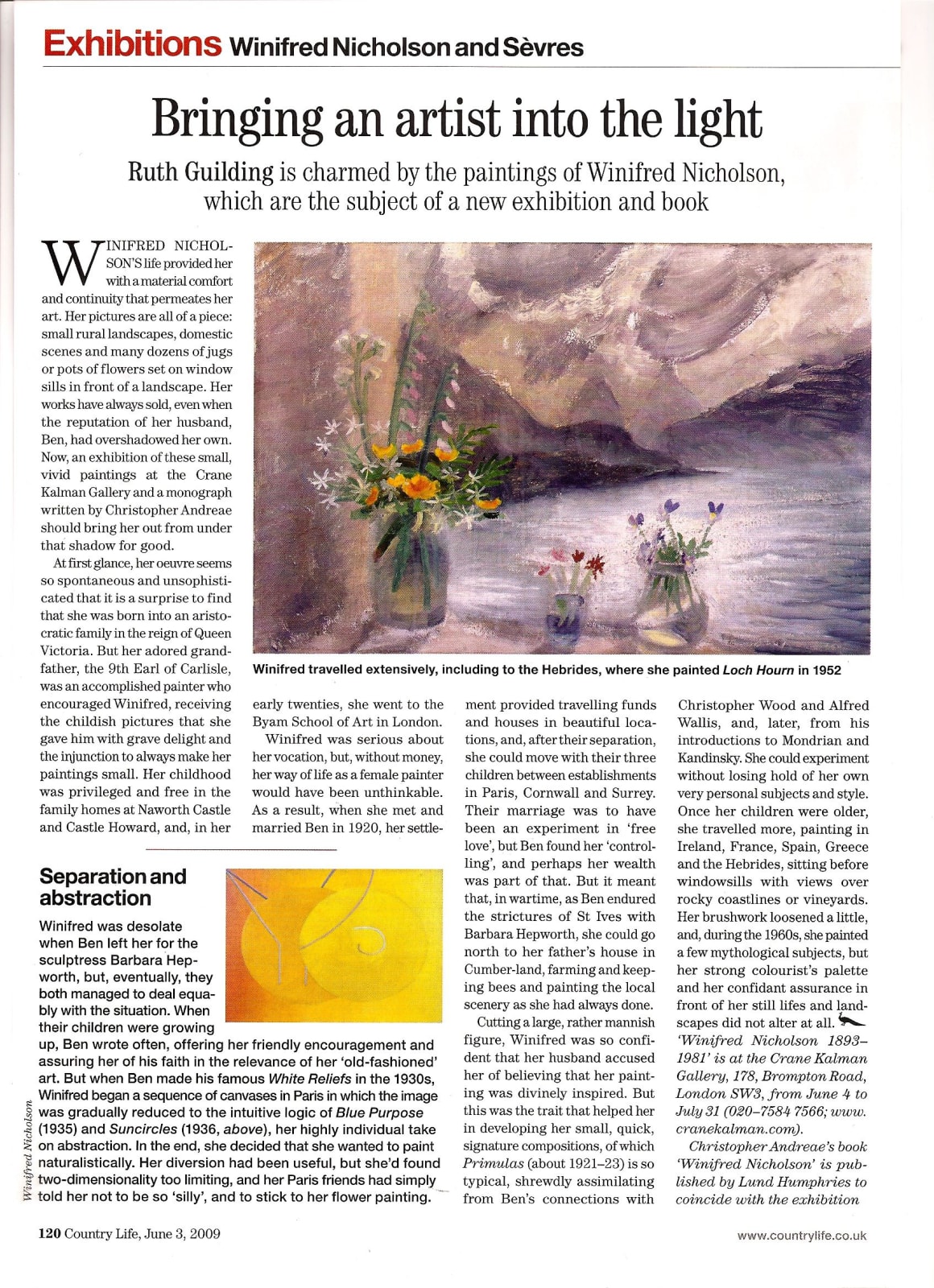Winifred Nicholson's life provided her with a material comfort and continuity that permeates her art. Her pictures are all of a piece: small rural landscapes, domestic scenes and many dozens of jugs or pots of flowers set on window sills in from of a landscape. Her works have always sold, even when the reputation of her husband, Ben, had overshadowed her own. Now, an exhibition of these small, vivid paintings at the Crane Kalman Gallery and a monograph written by Christopher Andreae should bring her out from under that shadow for good.
At first glance, her oeuvre seems so spontaneous and unsophisticated that it is a surprise to find that she was born into an aristocratic family in the reign of Queen Victoria. But her adored grandfather, the 9th Earl of Carlisle, was an accomplished painter who encouraged Winifred, receiving the childish pictures that she gave him with grave delight and the injunction to always make her paintings small. Her childhood was privileged and free in the family homes at Naworth Castle and Castle Howard, and, in her early twenties, she went to the Byam School of Art in London.
Winifred was serious about her vocation, but, without money, her way of life as a female painter would have been unthinkable. As a result, when she met and married Ben in 1920, her settlement provided travelling funds and houses in beautiful locations, and, after their separation, she could move with their three children, between establishments in Paris, Cornwall and Surrey. Their marriage was to have been an experiment in 'free love' but Ben found her 'controlling', and perhaps her wealth was part of that. But it meant that, in wartime, as Ben endured the strictures of St Ives with Barbara Hepworth, she could go north to her father's house in Cumber-land, farming and keeping bees and painting the local scenery as she had always done.
Cutting a large, rather mannish figure, Winifred was so confident that her husband accused her of believing that her painting was divinely inspired. But this was the trait that helped her in developing her small, quick, signature compositions, of which Primulas (about 1921-23) is so typical, shrewdly assimilating from Ben's connections with Christopher Wood and Alfred Wallis, and, later, from his introductions to Mondrian and Kandinsky. She could experiment without losing hold of her own very personal subjects and style.
Once her children were older, she travelled more, painting in Ireland, France, Spain, Greece and the Hebrides, sitting before windowsills with views over rocky coastlines or vineyards. Her brushwork loosened a little, and, during the 1960's, she painted a few mythological subjects, but her strong colourist's palette and her confidant assurance in front of her still likes and landscapes did not alter at all.
Winifred Nicholson 1893 - 1981 is at the Crane Kalman Gallery, 178 Brompton Road, London, SW3 from June 4 to July 31.
All Rights County Life.


